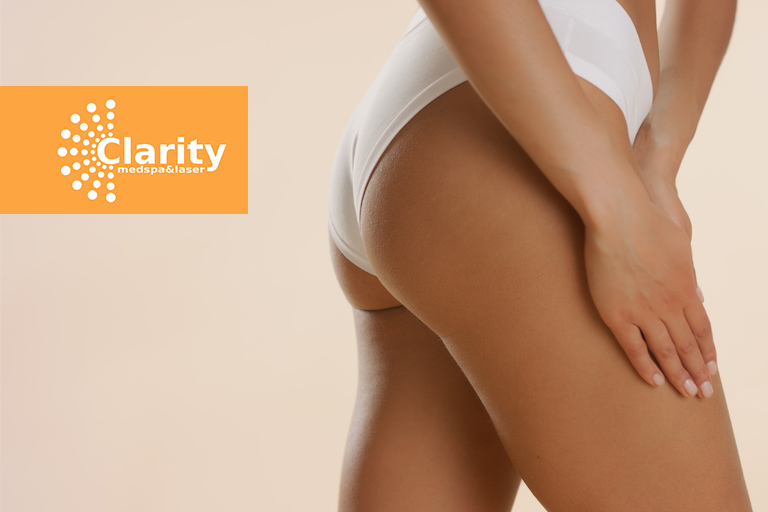From Stripes to Stunner: Can Laser Resurfacing Erase Your Stretch Marks?
Stretch marks, those lines that etch across the skin like unwelcome lightning strikes, can be a source of self-consciousness for many. Whether from pregnancy, weight fluctuations, or growth spurts, these indelible marks are a common concern. Enter laser resurfacing, a modern dermatological procedure that promises not just to fade but potentially erase these blemishes.
This article explores the efficacy of laser skin resurfacing for stretch mark treatment, offering insights into how this technology works, its benefits, and what individuals can realistically expect from the treatments.
How Laser Skin Resurfacing Treats Stretch Marks
Laser skin resurfacing has emerged as a forefront method in diminishing the appearance of stretch marks, leveraging advanced laser technology to promote skin regeneration and repair. This section discusses the nuanced procedures involved, setting realistic expectations, and the critical aftercare steps, focusing on the two primary laser types: ablative and non-ablative lasers.
Ablative Lasers: Intense Renewal
Ablative laser treatments are known for their effectiveness in treating more pronounced stretch marks. This process involves the removal of the outer layers of the skin, allowing for new, smoother skin to surface. The CO2 laser and the Erbium: YAG laser are the most common types used for these purposes.
-
Procedure
The ablative laser procedure is relatively swift, requiring around 30 minutes to an hour depending on the treatment’s extent. It’s performed under local anesthesia or a topical numbing cream to minimize discomfort. The laser precisely removes the skin’s surface, encouraging the body to generate new, healthy skin cells in place of the removed ones.
-
Expectations
Ablative lasers offer dramatic improvements in the texture and appearance of stretch marks. Results can be seen after the skin heals, typically within a few weeks, though optimal outcomes may necessitate several sessions spaced out over months. The procedure is especially effective for older, more entrenched stretch marks that non-ablative methods might not address as effectively.
-
Aftercare
Post-treatment care is vital, involving keeping the treated area clean, moisturized, and protected from the sun. The recovery period can last up to two weeks, during which patients may experience redness, swelling, and peeling. Following the dermatologist’s aftercare recommendations is crucial for healing and achieving the best results.
Non-Ablative Lasers: Gentle Rejuvenation
Non-ablative lasers, including fractional lasers like Fraxel, target the deeper layers of the skin without harming the surface. This method stimulates collagen and elastin production, essential components for healthy, elastic skin, making it an ideal choice for treating newer stretch marks.
-
Procedure
Non-ablative laser treatments are less invasive than their ablative counterparts, often requiring no downtime. A topical numbing cream is applied to reduce discomfort, and the laser is moved across the targeted areas, sending heat deep into the dermis to stimulate natural healing processes.
-
Expectations
While non-ablative lasers are gentler and require no recovery time, they typically necessitate more sessions to achieve noticeable results. Patients can expect a gradual improvement in the appearance of their stretch marks, with the skin becoming smoother and more uniform in texture over time.
-
Aftercare
The aftercare for non-ablative laser treatment is simpler, with minimal discomfort and no significant downtime. Patients are advised to avoid direct sunlight and use sunscreen to protect the treated areas. Moisturizing the skin can also help enhance the treatment’s effects.
Complementary Treatments
Optimizing the appearance of stretch marks often requires a multifaceted approach. Combining treatments can often yield superior results compared to a single method. For individuals seeking to enhance the appearance of their stretch marks beyond laser skin resurfacing, several complementary treatments can offer added benefits, making the skin not only smoother but more vibrant and healthy.
-
Microneedling
Microneedling, a procedure that involves creating tiny punctures in the skin using fine needles, is highly effective in stimulating collagen production. This process promotes the skin’s natural healing mechanisms, improving texture and elasticity. When combined with laser treatments, microneedling can accelerate the repair process, resulting in more pronounced improvements in the appearance of stretch marks. It’s particularly beneficial for those with older, more settled stretch marks, offering a boost in skin regeneration.
-
Chemical Peels
Chemical peels involve the application of a chemical solution to the skin, causing it to exfoliate and eventually peel off. This reveals newer, less damaged skin underneath with improved texture and tone. Chemical peels range from mild to deep, depending on the skin’s needs and the severity of the stretch marks. When used in conjunction with laser treatments, chemical peels can enhance the removal of damaged skin layers, facilitating a more effective regeneration process.
-
Topical Treatments
Topical creams and gels containing ingredients like retinol, hyaluronic acid, and vitamin C can support the skin’s healing after laser treatments. These products can improve skin hydration, encourage collagen production, and speed up the recovery process. Regular application of these topical treatments as part of an aftercare regimen can enhance the overall results, making the skin appear more supple and reducing the visibility of stretch marks.
Consult with a skincare professional to tailor a treatment plan that addresses specific concerns and skin types, ensuring the best possible outcomes.
Safety and Considerations
When pursuing treatments for stretch marks, particularly laser skin resurfacing, it’s crucial to be aware of safety protocols and considerations to ensure optimal outcomes and minimize risks.
-
Qualification of Practitioner
Ensure that the practitioner performing the laser treatment is highly qualified and experienced. Skilled professionals can accurately assess skin type, stretch mark severity, and the most appropriate laser option, significantly reducing the risk of adverse effects.
-
Skin Type and Colour
Laser treatments may have varying effects on different skin types and colours. Individuals with darker skin tones are at a higher risk of hyperpigmentation. A thorough consultation with a dermatologist can help determine the most suitable treatment while minimizing potential side effects.
-
Potential Risks
While generally safe, laser treatments can carry risks such as temporary pigmentation changes, scarring, and, in rare cases, infection. Discussing these potential risks with a healthcare provider beforehand can help set realistic expectations and prepare for the recovery process.
Laser resurfacing offers a promising solution for those looking to diminish the appearance of stretch marks. While not a panacea, it presents a significant advancement in dermatological treatments, offering hope and improved self-esteem to many. Interested individuals should seek consultation with reputable clinics to discuss their options.
For those in Toronto considering laser skin resurfacing, Clarity Medspa & Laser provides expert treatments, including the latest in laser technology. Get laser skin resurfacing in Toronto, contact us at 416 960-2222 to explore how they can help you achieve smoother, more radiant skin, free from the shadows of stretch marks.


 Linkedin
Linkedin Facebook
Facebook  Instagram
Instagram  Twitter
Twitter  Youtube
Youtube